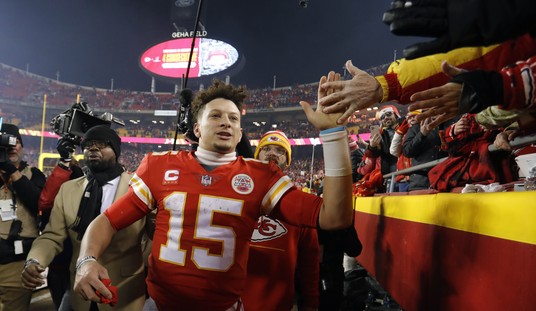One of the better episodes of Star Trek: Voyager involved the ship’s holographic doctor awakening on a distant planet, in a future hundreds of years from when Voyager was supposed to have taken place. The doctor–or to be precise, his holographic transmitter–was an artifact discovered by an alien race who were trying to reconstruct the role that the USS Voyager played in their planet’s history. He spent most of the episode telling his hosts how badly they were misrepresenting Voyager’s history.
Because liberalism dominated culture–especially pop culture–for the majority of the 20th century, it’s interesting to note how key events have been forgotten by reporters, journalists and historians.
Last year, Rod Dreher wrote a superb article on the yin and yang of God and American politics: that even as the press was reporting on “the Religious Right”, they completely ignored how the left largely abandoned religion, and became, as Dreher dubbed them, “The Godless Party”.
In his latest G-File, Jonah Goldberg comments on the New York Times’ latest discovery: that many young people are now (gasp!) conservatives!
In order to reach that conclusion, Goldberg notes that the Times has forgotten that there have been plenty of young conservatives–and they’ve been (or at the least became) a pretty diverse bunch:
The fact is there have been several waves of young conservatives between William F. Buckley Jr.’s founding of National Review and today. After all, Mr. B. is 78 years old and he founded the magazine five decades ago. George Will was a whippersnapper when he started writing for NR. Pat Buchanan was a teenager when National Review was founded and Bill Kristol wasn’t even born yet (though we all know he was plotting the overthrow of Iraq when he was but a mere twinkle in Irving’s eye). And all of those guys are old fogeys compared to most of us at National Review (and The Weekly Standard, and Reason, and even the Wall Street Journal editorial page) these days. Rich Lowry, for example was 31 when he took the helm at NR (though some people believe that he’s actually pushing 90 and that old man in the painting in his office isn’t Randolph Bourne but actually a Dorian Gray deal). And, more important, there is very little you can determine about the views of, say, Kristol, Will, Krauthammer, Brookhiser, Frum, Barnes, Lowry, Steyn, Bork, Kesler, O’Sullivan, Ponnuru, and/or whoever else belongs in your own personal pantheon of conservative heavyweights, from their dates of birth.
 One of the great points that David Frum made in his terrific recent book on the 1970s, How We Got Here is that it was really the seventies that codified much of the stranger elements of today’s society, and that the weirdness of the 1960s–the hippies, drugs, pyschedelia, protests, occurred in much smaller numbers than we normally think of, but history remembers those elements as making the sixties…the sixties.
One of the great points that David Frum made in his terrific recent book on the 1970s, How We Got Here is that it was really the seventies that codified much of the stranger elements of today’s society, and that the weirdness of the 1960s–the hippies, drugs, pyschedelia, protests, occurred in much smaller numbers than we normally think of, but history remembers those elements as making the sixties…the sixties.
But there was another side of the 1960s as well, which history virtually ignores: the launch of the modern conservative movement. As Jonah writes:
Did you know that conservatives had a “youth movement” all their own in the 1960s? You don’t hear too much about it because those who control the commanding heights of the popular culture were involved in the other youth movement. The Left’s youth movement, typically, was obsessed with itself. For example, the quintessential statement of the Left’s youth movement was the Port Huron Statement. It begins, “We are people of this generation, bred in at least modest comfort, housed now in universities, looking uncomfortably to the world we inherit.” The authors go on for over 25,000 words, whining about their angst, their worries, their concerns










Join the conversation as a VIP Member